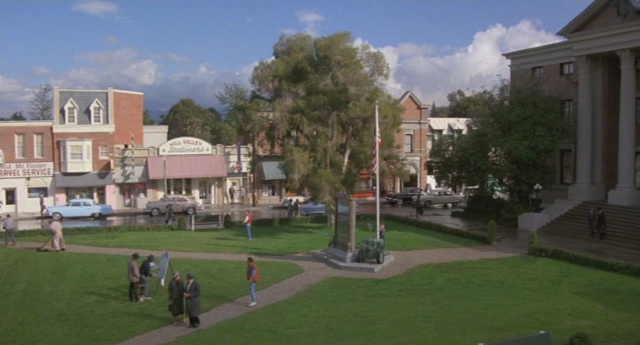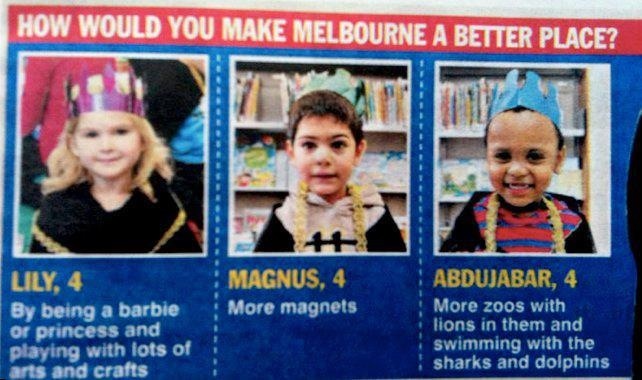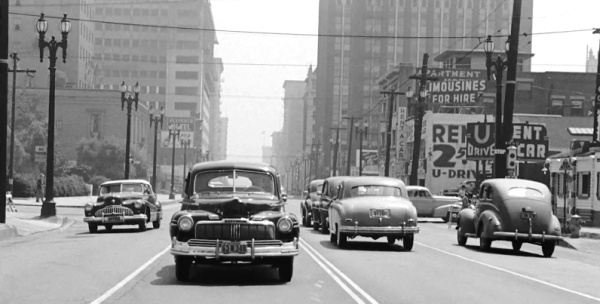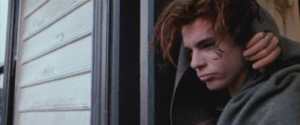
I am talking tonight at Loop, and this post should appear by the magic of WordPress as I’m speaking. I thought it may be worth providing links to a few of the pieces of writing that explore things I touch on in my presentation.

I am talking tonight at Loop, and this post should appear by the magic of WordPress as I’m speaking. I thought it may be worth providing links to a few of the pieces of writing that explore things I touch on in my presentation.

The consultation period for the review of the Melbourne metropolitan strategy has just finished. I didn’t make a submission and haven’t really had much to say on the topic. This is despite my usual boundless enthusiasm for getting wound up by planning reform measures, and the fact that this seems to be the biggest thing on the planning agenda: certainly it seems to be the last well-resourced thing left happening at the increasingly besieged DPCD.
I just discovered that my great uncle, Fred Mitchell, is selling his photos as prints on RedBubble. Fred’s photos have been a source of admiration in my family for years, but it’s nice to see them readily available somewhere that a wider audience can view and order them.
While his collection is very wide and full of good stuff, it’s his photos of mid-twentieth century Melbourne that I keep going back to: in addition to their intrinsic attractiveness, they are fascinating for their portrait of daily life in 1950s Melbourne. (One of his products is a calendar collecting together many of the best).
This send-up of poor quality tourist infomercials is superficially disparaging of Melbourne, but actually manages to affectionately capture a sense of the everyday, humdrum life of the city.
It would be an interesting exhibit in a discussion of whether Melbourne (or any city) has its own distinctive ethos, an issue discussed by Alan Davies here.

I wrote a couple of months back about the power of movies to preserve a record of cities as they used to be. In that post I included various pieces of footage of Melbourne, and one interesting thing was how recognisable the streets remained. There was no mistaking many locations – such as Princes Bridge, Elizabeth Street, and St Kilda Road – in footage as much as a century old. Despite everything that has gone on in the last century, Melbourne in the 1910s remains fundamentally recognisable. But how much can a city change?
That question was prompted by a video guaranteed to push both my film and planning nerd buttons: 1940s footage of Los Angeles recorded to be back-projection footage for a driving scene in an (unknown) movie project. This came to my attention via The Atlantic and UrbanPhoto blog’s twitter feed, and was originally posted in truly astounding quality by The Internet Archive (here). Below is a YouTube embed, but you can get even better quality on their page.
This footage is of Downtown L.A. and the nearby Bunker Hill district, and it gives some sense of just how profoundly Los Angeles has been transformed. In my previous post I alluded to the remarkable books by John Bengtson that reconstruct silent-film-era Los Angeles from the films of Buster Keaton, Charlie Chaplin, and Harold Lloyd; one thing you get from his work is an idea of just how different a kind of city Los Angeles was in the first part of the twentieth century. This footage reinforces that.
Perusing through the Melbourne Curious blog alerted me to the fact that Australian Screen have some amazing historical footage of my home city, Melbourne, available for viewing and download. It got me thinking again about the role that films play in preserving a record of our built environment.
Before I expand on those thoughts, here’s a sample of the stuff they have. There’s extracts from Marvellous Melbourne: Queen City of the South, a film from 1910 by Charles Cozens Spencer. It gives a great sense of the feel of Melbourne’s streets at that time.
 Dogs in Space (Richard Lowenstein, 1986) and
Dogs in Space (Richard Lowenstein, 1986) and
We’re Livin’ on Dog Food (Richard Lowenstein, 2009) and
He Died With a Felafel in His Hand (Richard Lowenstein, 2001)
Movies are time capsules. Inner city suburbs of Melbourne such as Fitzroy, Brunswick, Carlton, Richmond, St. Kilda and Collingwood are now largely gentrified, filled with young professionals and with only a modicum of their former grunginess preserved; much of the shabbiness that remains – pokey cafes, tatty pubs – is artfully preserved to maintain an inner city chic. Yet the older, scruffier inner Melbourne is still there in all its glory in films like The Club, Malcolm, Death in Brunswick and Monkey Grip. Amongst this group, no film stands as deliberately as a time capsule of a place and an era as Richard Lowenstein’s cult classic Dogs in Space, from 1986, which has now been released on DVD after playing at the 2009 Melbourne International Film Festival.
The film chronicles life in a Richmond share house in the late 1970s, centering on the spaced-out musician Sam (Michael Hutchence) and his easygoing girlfriend Anna (Saskia Post). Virtually plotless, it depicts the parties and conflicts in and around the house as various different subcultures (punks, hippies, and one unfortunate uni student) co-exist. Many of the housemates are in underground punk bands, and the film was inspired by real-life events in the Melbourne post-punk music scene. As Lowenstein’s subsequent documentary We’re Livin’ on Dog Food (which also played at the festival and which is included on the Dogs in Space DVD) makes clear, the timing of Dogs in Space was at once far enough away from the real events that it already had a nostalgic air, and yet close enough that the film could get a documentary-like feel through the participation of some of the real people and bands.
I still don’t see enough discussion of the importance of location in film. It’s not that it doesn’t get discussed at all; I’ve seen a fair few academic books and articles over the years that touch on it, and the recent upsurge of interest in the depiction of cities in film (which leads to books like Celluloid Skyline and Screening the City and The Cinematic City) reflects a fairly closely related interest. But I’ve felt for a long time now that location is one of the most critical elements in a film; it often seems to me that the places and locations we see in films deserve much more primacy in discussion about movies.
When I think about my favourite movies, one thing that strikes me is how many of them create a vivid sense of place; I love films that make me feel like I’ve visited somewhere. That isn’t just for obvious epic style movies in exotic locales, like a Lawrence of Arabia; I’m thinking about movies in all sorts of genres, and all sorts of types of locations. So it might be the L.A. suburbs of E.T., or the New England town of Jaws, or Woody Allen’s idealised New York in Manhattan, or the frontier backwoods of McCabe and Mrs Miller, or even the fantasy environments of the original Star Wars. One of the key things that separates these films from their less successful imitators is the sense of immersion in those places that they offer.